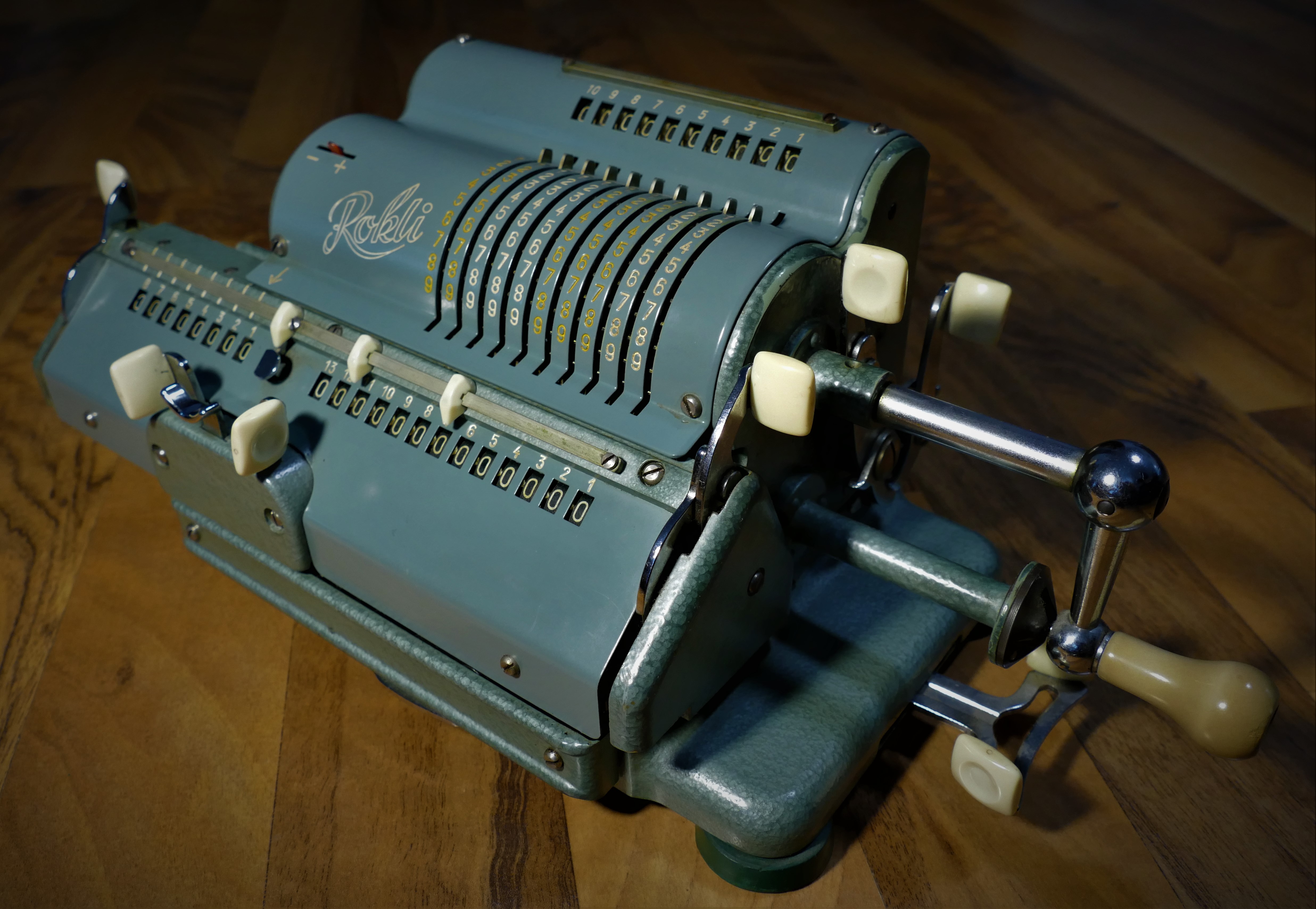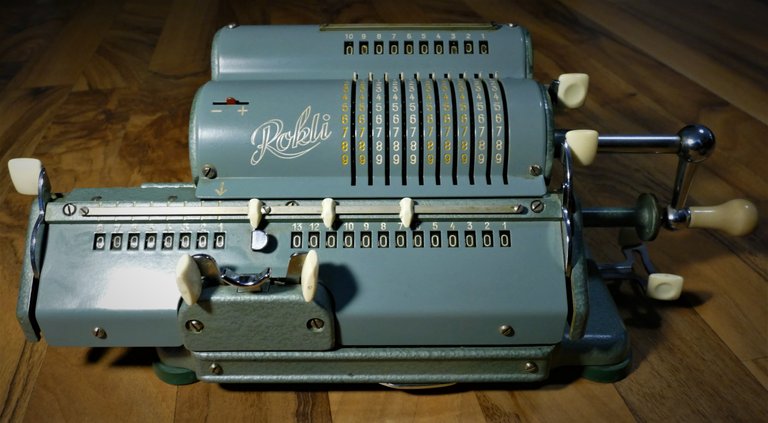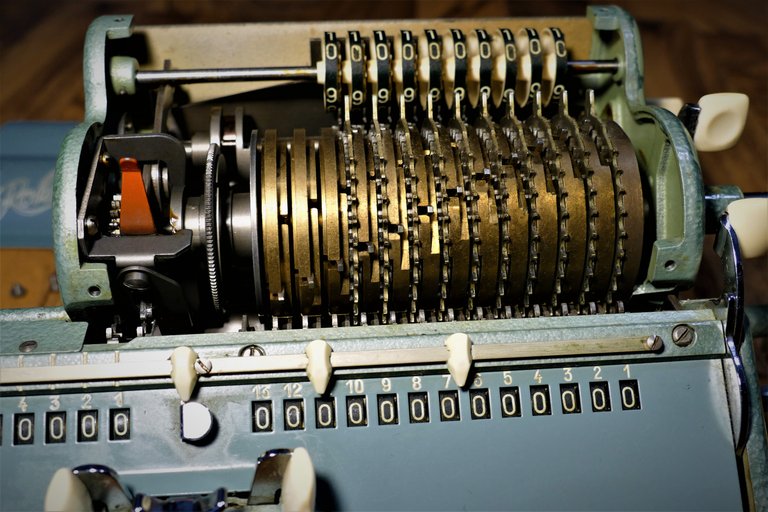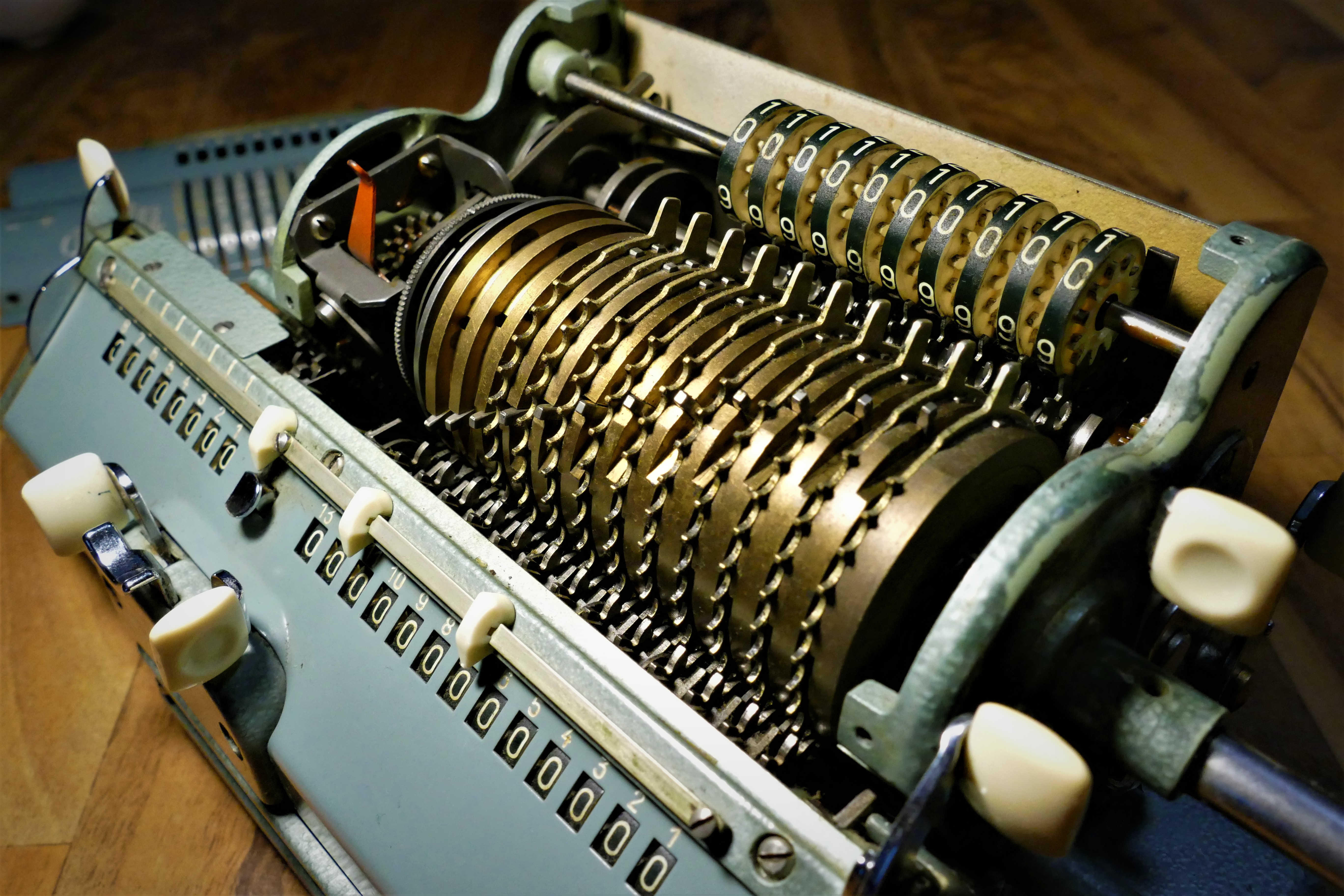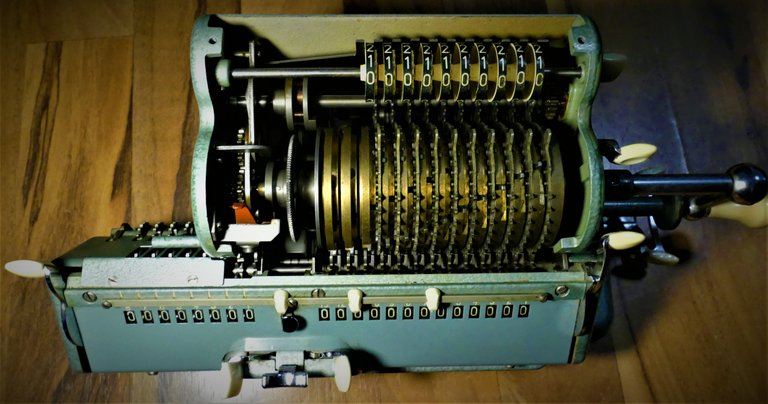Introducing my antique calculating machine
photo by mrf83
a couple of years ago I found an old calculating machine literally on the side of the road. Someone must have cleaned out an apartment and left it between old furniture and other interior on the road to get picked up by the garbage removal. As soon as I saw this thing I was fascinated by it, so i took it back home. It is very heavy and mostly made of steel, aluminium and brass. It seems to be made to last forever.
photo by mrf83
It was the first time for me to see such machine and I had my fun to play around with it to figure out how it works. There are a bunch of hand gears, cranks and buttons to explore. You can do addition, subtraction and multiplication with this machine. For me it is quite amazing to see how fast the technology developed from mechanical 5 Kg heavy machines to even more powerful modern calculators which are in every smartphone nowadays.
photo by mrf83
To say I developed fast is actually not really true. The first mechanical calculator was, as you may know, the abacus. This primitive but effective device was only mad of beads on rods hold by a frame. It was a helpful tool for the Egyptians and Sumerians 2000 BC. You can read more about the History of the calculator here.
Resource: www.thecalculatorsite.com
However, my machine was probably made between 1958 and 1963 by a company named Robert Kling GmbH located in Wetzlar, Germany.

Resource: www.rechnerlexikon.de
The Robert Kling GmbH (the logo on the machine “Rokli” is consisting of the company founder) was established in 1918 and produces besides calculating machines also ball bearings. The price for such a device was about 600 DM - “Deutsche Mark” (roughly about 300€ nowadays i guess)
The Heart of every calculator machine is the pin wheel for each position of input one. It is basically a gearwheel though the tooth are not symmetric like a common gearwheel. This component gave the machine also the name “Sprossenradmaschine” which translates to pinwheel machine.

Resource: www.rechnerlexikon.de
The Heart of every calculator machine is the pin wheel for each position of input one. It is basically a gearwheel though the tooth are not symmetric like a common gearwheel. This component gave the machine also the name “Sprossenradmaschine” which translates to pinwheel machine.
Here a small animation of how it works
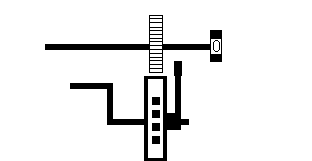
Recourse: www.didaktik.mathematik.uni-wuerzburg.de
I think this is a pretty good peace of engineering. If you have a look inside you can get an idea of how complex this system is. However this mechanic way of calculating is quite functional and must have been a great help for all accountants back then. It is also hard to destroy any part of this machine and even if something breaks, it can be fixed if you have a little understanding of mechanics. I hardly believe any modern calculator can be fixed, if some essential part breaks. This is exactly why I love this “old technology".
photo by mrf83
I guess now you wonder how to use it after all. I think the best way to explain it is with a short video with some simple examples. I created a few sample videos to give you the idea.
photo by mrf83
Here you can see that I first set the number 12, then turn the crank to log it in. In the next step I set the number 24, turn the crank and the numbers add up to 36. You might see the counter on the left side, it is counting the turns and is needed for multiplication, which I show you later.
To subtract, you use the same way as for addition but you need to set the little + - switch on the left side to – and turn the crank in the opposite direction.
For the multiplication we try to calculate 21 * 25. Set 21 then turn the crank to log the number in. this resembles 21 * 1, it is still 21. now turn the crank another 4 rounds until you see a 5 on the left scale. Now you can move the scale to the next digit. Here you need to turn the crank 2 times until we see 25. The result is 525.
This are just very simple examples and you can actually do more difficult calculations with this machine. For me it is super interesting to have this peace of technology history in my house.
photo by mrf83
I hope you enjoyed to learn a bit about my antique calculating machine and maybe you also have a similar peace at you home?
I would love to read about it!
Please let me know if you have any questions in the comments. I look forward to awnser.
Also if you have critic feel free to let me know!
Thank you for stopping by!
Have a nice evening and see you soon.
Resource links:
www.thecalculatorsite.com
http://www.thomas-kirchhof.de/
www.thecalculatorsite.com
www.didaktik.mathematik.uni-wuerzburg.de
